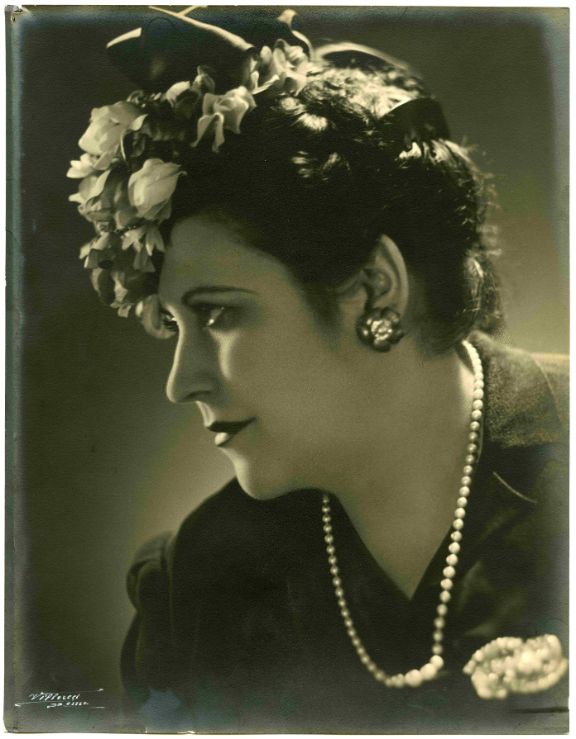- Home
- Current
- Dona(n). El papel de las mujeres en las colecciones del museo
- María Asunción Aguilar Ros
María Asunción Aguilar Ros

María Asunción Aguilar Ros (Alicante, 1891-Burjassot, 1970)
María Ros was the stage name chosen by the soprano María Asunción Aguilar Ros. She made her debut on 14 June 1912 in the premiere of La Generala [1], an operetta by Amadeo Vives, with a libretto by Perrín and Palacios. The critic writing for the ABC newspaper said that Ros and the other singers in secondary roles were like “a bunch of fresh roses”. Until she retired from the stage in 1926, she earned wide acclaim for her “intense voice with rich velvety tone.” [2]
Ros had trained at the Spitzer-Solà vocal academy, [3] alongside other singers like Teodoro Landerer and Emilia Vergori. The academy followed the vocal technique taught by the renowned Manuel García, whose method was used to train several generations of the greatest opera singers.
Her first operatic role came in 1915, performing Aida in Castellón de la Plana. At that time Verdi's opera was the most popular in Valencia, and opera companies often opened the season with it. [4] This was followed by tours across Europe and America.
Ros met the Italian tenor Giacomo Lauri-Volpi in 1921, when they were performing Rigoletto in Ferrara. They became engaged shortly afterwards, in Oviedo, during a tour of the north of Spain. After they married in 1924, and given the difficulty of balancing both careers, the soprano retired from the stage to help perfect her husband’s voice.
The couple chose to get married and to settle in Burjassot. Ros owned a mansion house close to the neighbouring town of Godella, where the tenor Lamberto Alonso, another of Ros’s mentors, lived.
In Burjassot the couple joined an intellectual circle which was also frequented by Manuel González Martí, whose family also owned a house there. As a result of this long-standing friendship the Museum of Ceramics founded by González Martí was able to enrich its collection. Over the course of almost one decade, Ros and Lauri-Volpi donated a large number of objects to the museum: ceramics, furniture and costumes, as well as works of art. As a sign of gratitude, González Martí put all these pieces on display in a room dedicated to the couple.
In 1970, González Martí asked the soprano for help to purchase Autumn and Spring, a couple of oil paintings by Emilio Sala, now on view in the fumoir. Ros responded with a generous financial donation which enabled the museum to acquire the works in June of that year. Later, Ros was appointed patron of the museum, acknowledging her work as a benefactor of the institution. A few months afterwards, she died at her mansion in Burjassot.
[1] In Lamb, Andrew. “La generala: When Vienna Comes to Madrid”. La Generala (programme). Madrid, Teatro de la Zarzuela-INAEM, 2008, pp. 7-13.
[2] Lauri-Volpi, Giacomo: “El equívoco”, 1940. On the first impression his future wife made on him, he wrote: "I have never heard such intensity of sound in a light soprano."
[3] The Spitzer-Solà vocal academy, founded by the Hungarian soprano Herminia Spitzer Soliberg (1844-1924) and her husband, José García Solà (1860-1922), was located at number 1 Paseo de la Alameda. García Solà was also choir master at Teatro Principal in Valencia (Díaz Gómez, Rafael: Diccionario de la Música Española e Hispanoamericana, 2002).
[4] Torner Feltrer et al: “La ópera en Valencia durante la monarquía de Alfonso XIII”. In Itamar. Revista de investigación musical: territorios para el arte, no. 4, years 2011-2018.
Ana Tomás Hernández



